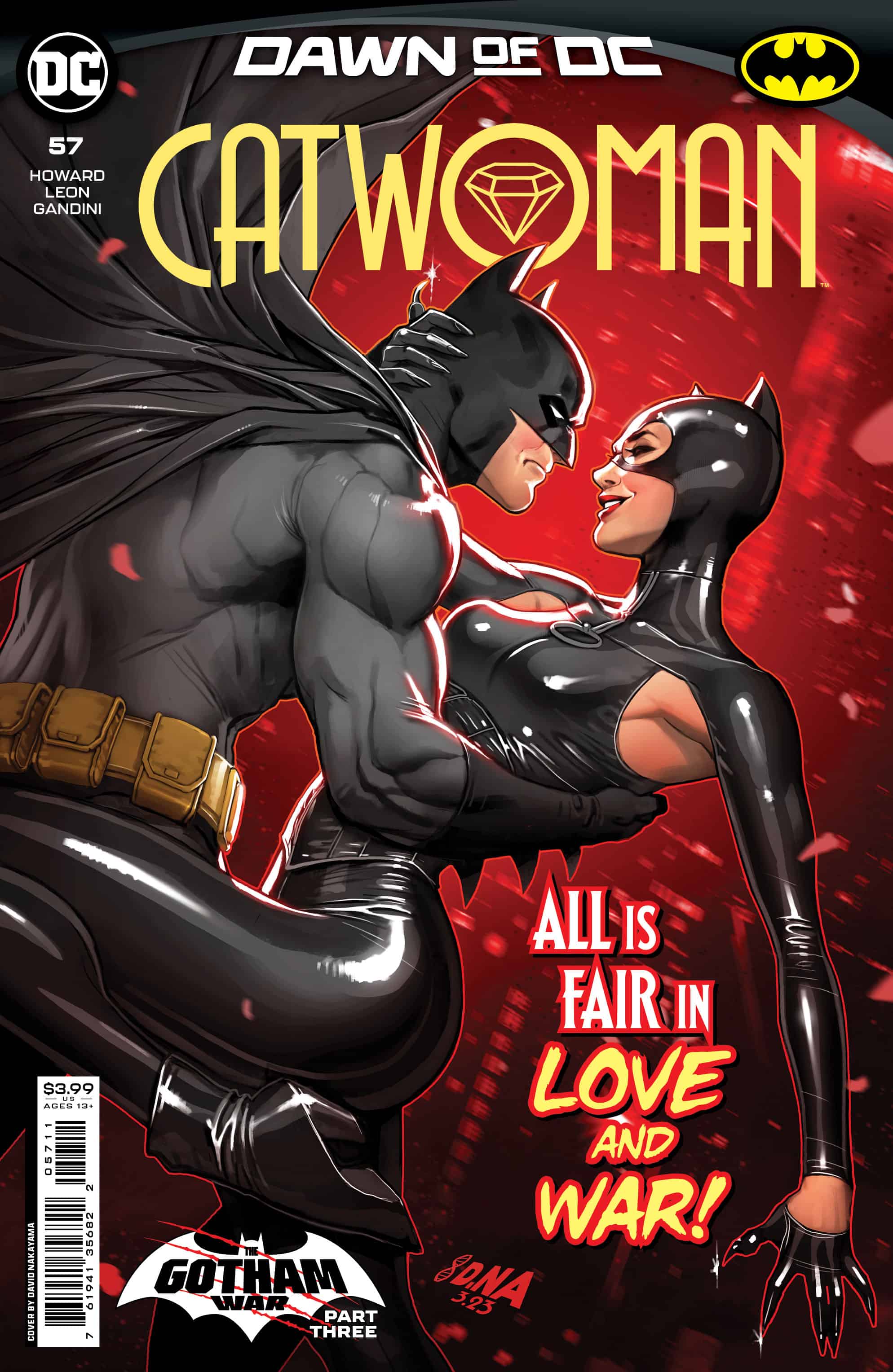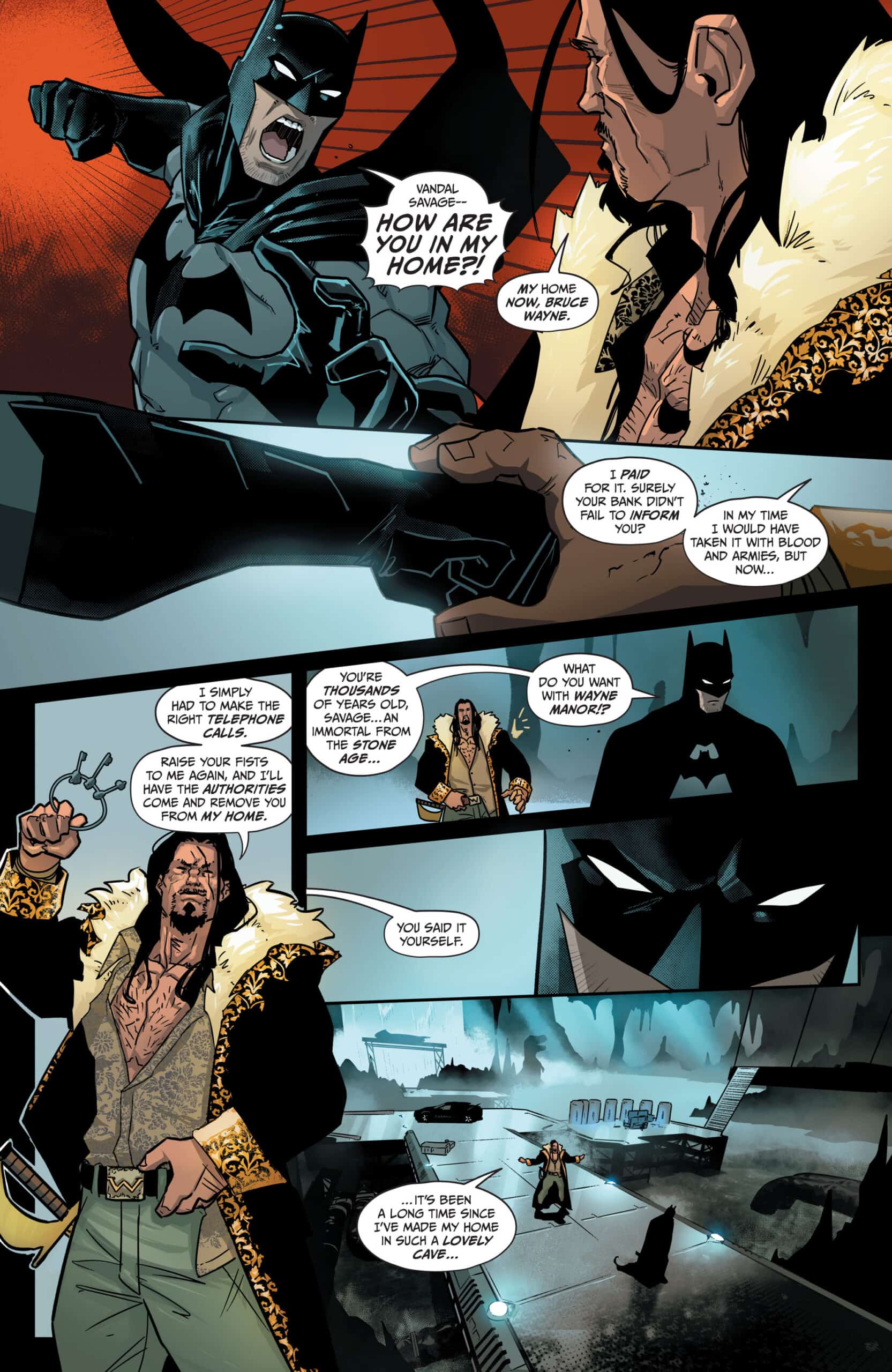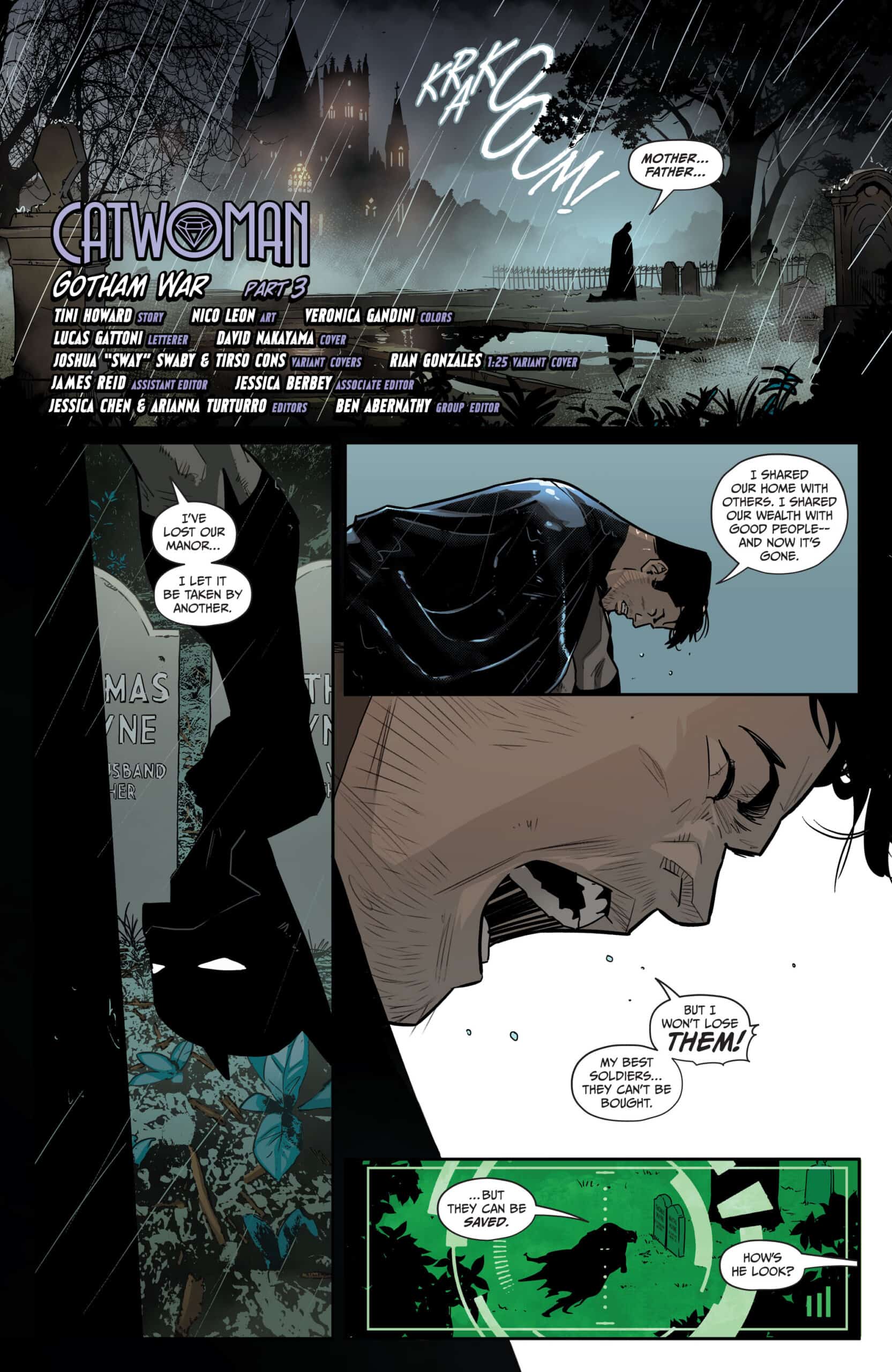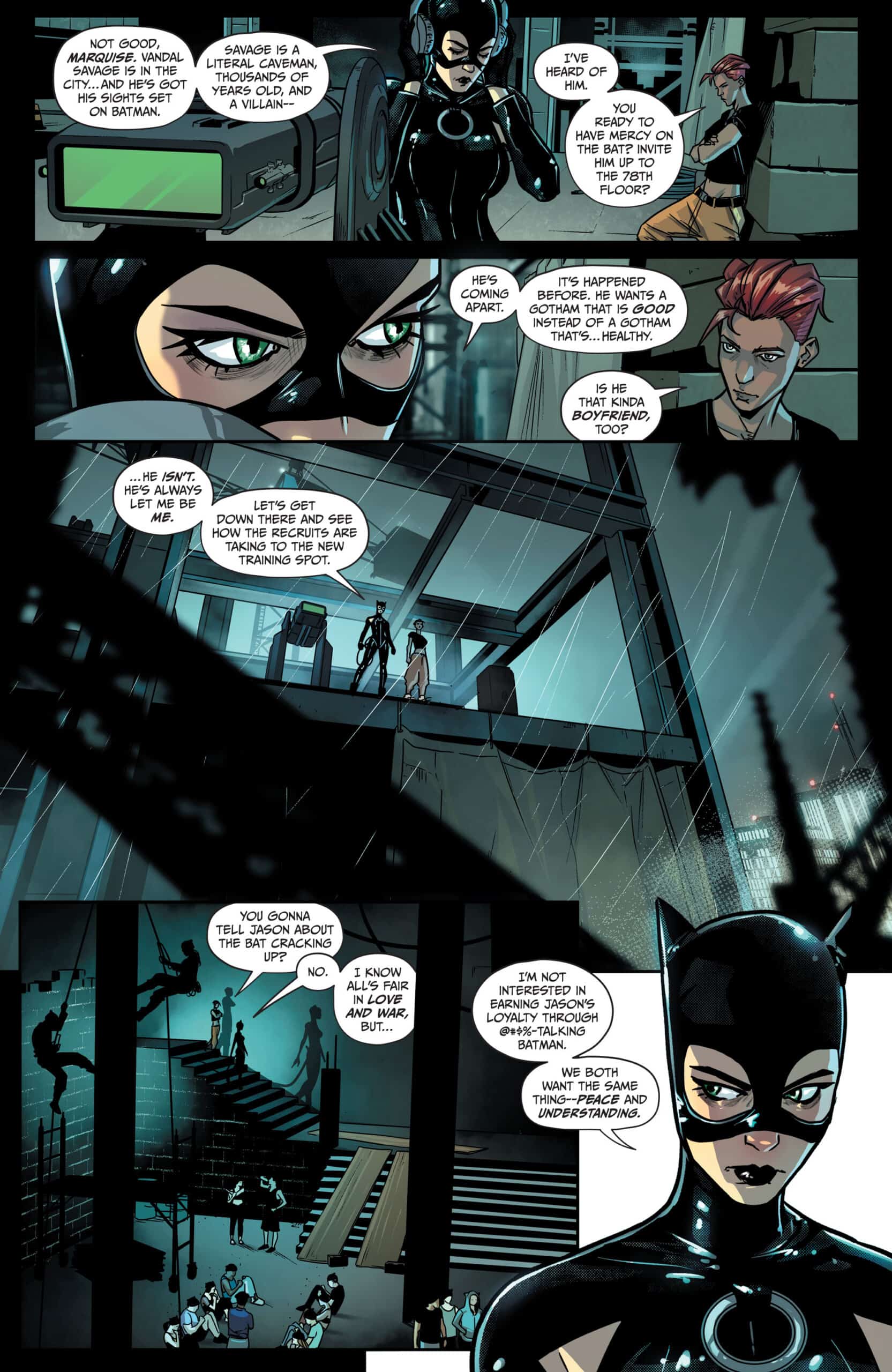Catwoman #57

Recap
BATMAN/CATWOMAN: THE GOTHAM WAR PART 3! While Batman finds himself more and more isolated, Selina is never alone. With a volunteer army and two powerful generals by her side, the ballet between her and Bruce enters its next act with a shocking twist!
Review
A danger of the crossover in modern comics, especially those written by two authors with distinct voices for a character, is a sense of dialectic voices. Rather than harmonizing on a character level, the books instead feel like two distinct tones that step on each other’s toes. Even in the best circumstances, it’s difficult for the writers to fall in sync, and that’s what appears to be happening with Batman and Catwoman as they enter the Gotham War.
Catwoman #57 – written by Tini Howard with art from Nico Leon, colors by Veronica Gandini, and letters from Lucas Gattoni – continues the Gotham War, picking up immediately from the reveal of Vandal Savage’s presence in the last issue of Batman. The book quickly moves Batman’s confrontation with Savage to the next step of Catwoman’s big score. She, Red Hood, and her students work to boost cars as a cover for a jewelry heist at the Gotham Ballet. Batman strikes and chases Jason as Catwoman dances around Vandal’s request for her loyalty, and the book ends with yet another surprise twist that feels natural in hindsight.
The scripting for this issue feels incongruous with previous issues of the crossover due to the way that Howard writes this iteration of Batman. Gone is the rabid personality that has bled out since the end of Knight Terrors, and this Batman reads a bit more in line with the typical depiction of the character. It restrains the book in a way that undercuts the core tension of the larger story and takes a step back in terms of the dramatic escalation.

Catwoman’s planning and the ballet sequences feel the most in line with the previous story established in the run. It’s a slick affair, and captures the electric feeling of a heist in motion, right down to the Selina/Savage dance as a metaphor for the larger conflict. Howard can make a heist feel like clockwork and the book manages both a surprise and obvious details all at once.
While this is in motion, Selina is also visited by Nightwing, who offers a lecture and a reminder of an old memory of Bruce, Selina, and a young Dick at the same ballet. It’s a touching moment that showcases Howard’s ability to channel emotion in the right place. The recurring theme of family and the schism forming is reflected in this moment and proves that honesty beats out cliché in most storytelling instances.

Leon’s art feels off for this event, clashing in a negative way with the look that Batman artist Jorge Jiménez has defined in the previous issue. Leon’s linework is presented as too smooth, which works in the slick heist sequences but hurts the visual dimension of the dark knight. No grit or texture scruffs the Gotham on display, and the book suffers for it. The action sequences are also lacking, in part due to the slimming effect for anatomy that comes as a result of the smooth linework.
When the book shifts into the dance sequence between Selina and Savage, the art enters the most fluid bit of paneling, as tall, rigid panels read like the mechanics of a dance. It’s a bit rehearsed, a bit improvisational, and all grace as the characters clash ideologically. Leon captures that crackling energy of the sequences, but is unable to sustain it further than the middle of the issue. The chase sequence is stiff in execution, and Leon’s version of Batman feels off in an unintentional way that is less tackling the twisted emotions of the vigilante and more a natural extension of a specific style.

That sense of slickness in the artwork is a result of Gandini’s coloring, which plays on the palette of a washed-out, contrasting Gotham. The backgrounds are filled with dark colors and stormy grays, giving a more somber tone to the issue that evokes a sense of melancholy rather than feverous paranoia that Batman trades in. Even in these muted hues, Gandini employs sharp splashes of color that sell the slick nature of the story. The lights and costumes at the ballet glimmer in the light, evoking that feeling of glitzy high society. It’s a sharp contrast to the muted tones that permeate the exterior world as Batman chases down Red Hood, and reinforces the dichotomy of Gotham.
Final Thoughts
Catwoman #57 is a mixed bag that works as a solid Catwoman story but fails to deliver on the premise of "Gotham War." Howard’s writing is like a Swiss watch that struggles to capture the explicit tone found in the Batman-led issues. The heist sequences and high society beats are the most natural from the issue and the art channels that sense of fluidity to similar effect. The art also finds itself trapped in that conflicted atmosphere, as the anatomy of Batman feels in sharp contrast to what is on display in Batman. The issue is a disappointing follow-up to a strong opening set of issues, and hopefully, the book can return to the established premise and continue to explore the off-kilter Batman and Catwoman.
Catwoman #57: Let the Memory Live Again
- Writing - 5/105/10
- Storyline - 7/107/10
- Art - 4/104/10
- Color - 5/105/10
- Cover Art - 7/107/10





